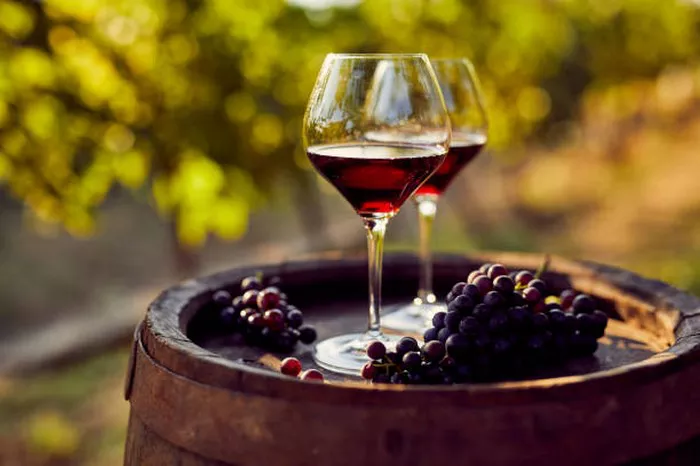Sloe wine, with its rich history and distinct taste, captivates wine enthusiasts worldwide. Crafted from the small, dark fruit of the blackthorn bush, this unique libation offers a sensory experience unlike any other. From its deep ruby hue to its complex flavor profile, sloe wine embodies tradition, craftsmanship, and a connection to the land. In this article, we delve into the nuances of sloe wine, exploring its taste, aroma, and the factors that contribute to its exceptional character.
Exploring the Origins of Sloe Wine
Sloe wine traces its roots back centuries, originating in Europe where the blackthorn bush thrives in its native habitat. Traditionally found in the hedgerows of Britain, Ireland, and other parts of Western Europe, sloe berries have long been harvested for their culinary and medicinal purposes. However, it wasn’t until the Middle Ages that these tart, astringent fruits found their way into winemaking, giving rise to the beloved sloe wine we know today.
The Distinctive Taste of Sloe Wine
One cannot discuss sloe wine without delving into its unique flavor profile. At first sip, sloe wine offers a burst of tartness that gives way to a subtle sweetness, reminiscent of ripe plums or cherries. The tannins from the sloe berries contribute to a pleasantly astringent mouthfeel, while underlying notes of almond and spice add depth and complexity. The result is a well-balanced wine that is both refreshing and intriguing, with layers of flavor that evolve with each sip.
A Symphony of Aromas
Beyond its taste, sloe wine entices the senses with its captivating aroma. Upon pouring a glass, one is greeted with a bouquet of ripe berries, mingling with hints of earthiness and floral undertones. As the wine aerates, these aromas intensify, filling the room with a fragrant perfume that invites anticipation. Whether enjoyed on its own or paired with food, the olfactory experience of sloe wine is sure to leave a lasting impression.
Craftsmanship in Every Bottle
Central to the allure of sloe wine is the craftsmanship involved in its production. From the careful selection of ripe sloe berries to the precise blending and aging process, each bottle represents the dedication and expertise of the winemaker. Traditional methods often involve macerating the berries in a base wine, allowing their flavors to infuse over time. The result is a labor of love that embodies the essence of the land and the artistry of winemaking.
Pairing Possibilities
While sloe wine can certainly be enjoyed on its own, it also lends itself beautifully to food pairing. Its vibrant acidity and complex flavors make it a versatile companion to a wide range of dishes. For a classic pairing, consider serving sloe wine alongside a cheese platter featuring aged cheddar or blue cheese, allowing the wine’s acidity to cut through the richness of the cheese. Additionally, its fruity notes complement grilled meats such as lamb or duck, while its tannic structure stands up well to hearty stews and game dishes. For dessert, try pairing sloe wine with dark chocolate or berry-based desserts for a decadent finale to the meal.
The Influence of Terroir
Like all wines, the character of sloe wine is heavily influenced by its terroir—the combination of soil, climate, and geographical factors that shape the grapes and, by extension, the resulting wine. Sloe berries grown in different regions exhibit varying levels of acidity, sweetness, and tannins, leading to subtle differences in flavor and aroma. Factors such as altitude, sun exposure, and soil composition all play a role in shaping the terroir of a particular vineyard, ultimately imparting a sense of time and place to the wine.
See Also: 10 Best Red Wines for Father’s Day Gifts
Sloe Wine: A Toast to Tradition
In an era of mass production and homogenized flavors, sloe wine stands as a testament to tradition and authenticity. Its roots firmly planted in the countryside, sloe wine embodies a connection to the land and the generations of winemakers who have preserved its legacy. Whether enjoyed as a symbol of celebration or a simple pleasure to be savored, sloe wine invites us to slow down and appreciate the beauty of craftsmanship and the bounty of nature.
Conclusion: A Taste Worth Savoring
In conclusion, sloe wine offers a sensory journey unlike any other, with its vibrant flavors, enticing aromas, and rich history. From its humble origins in the hedgerows of Europe to its status as a beloved beverage enjoyed around the world, sloe wine captivates the palate and the imagination. Whether experienced as a standalone indulgence or paired with a gourmet meal, sloe wine invites us to explore the nuances of flavor, celebrate tradition, and savor the simple joys of life. So raise a glass, and toast to the timeless allure of sloe wine. Cheers!


